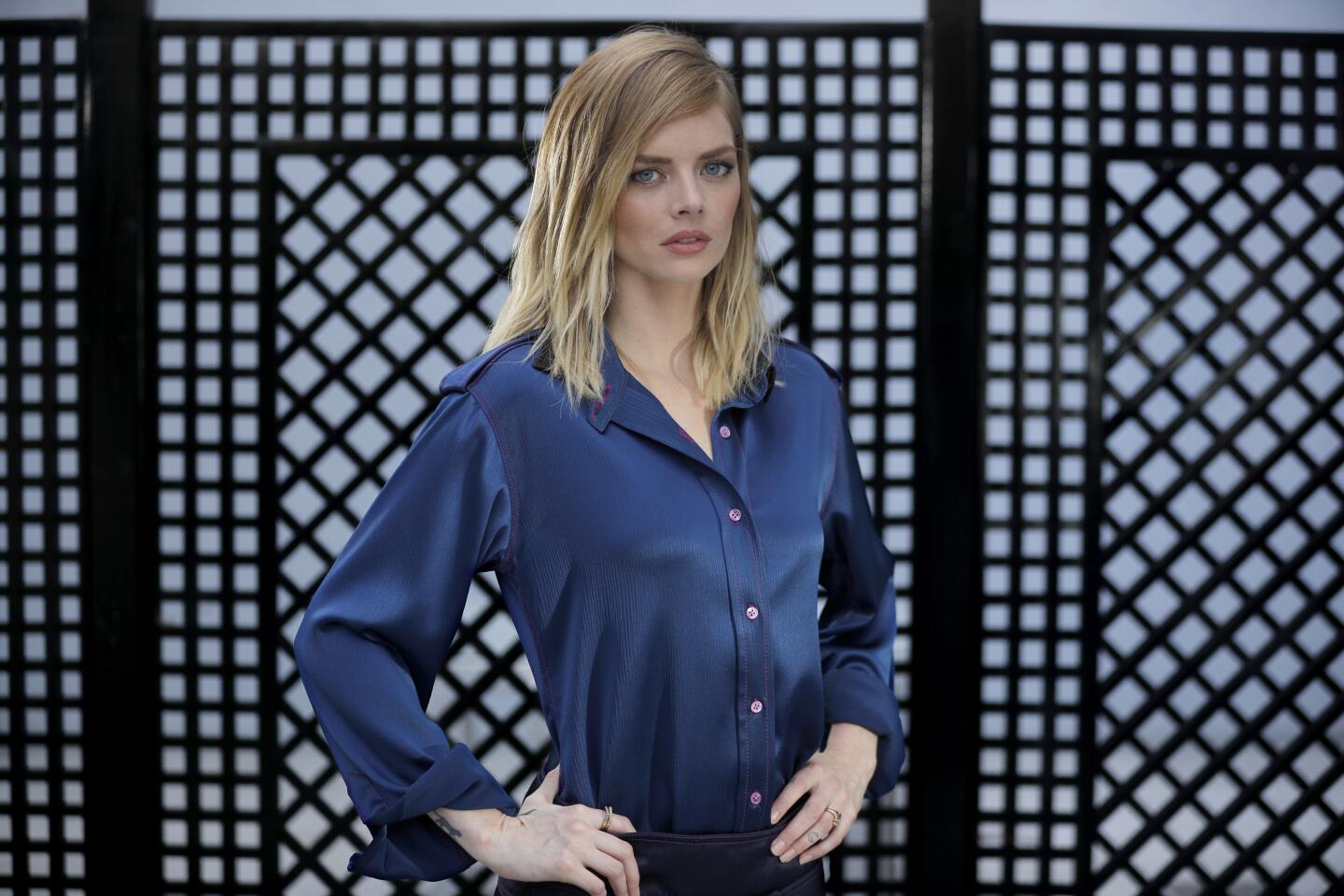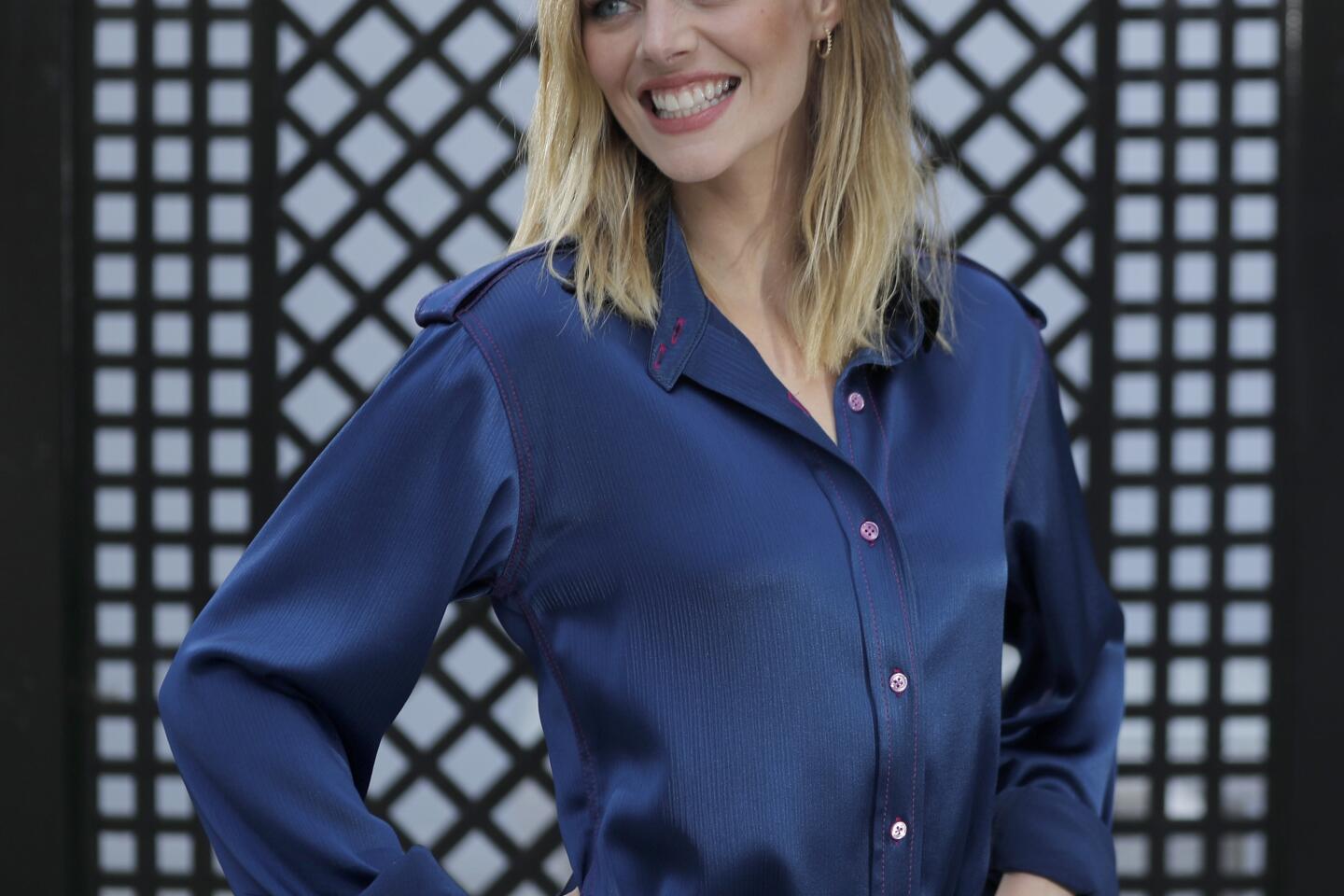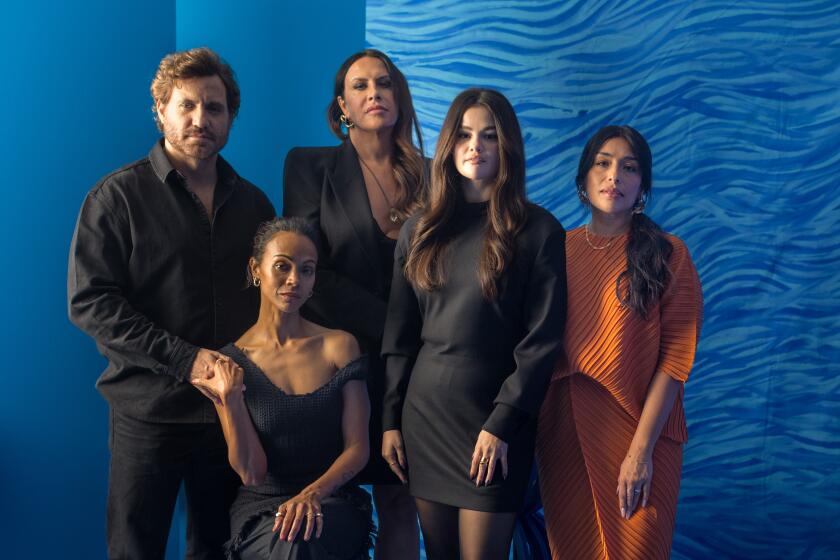‘Ready or Not’ ending explained: Bloody laughs at the expense of the 1%
[Warning: The following story contains minor spoilers for the horror thriller “Ready or Not,” in theaters now. There will be another warning before discussion of the film’s ending.]
The highbrow specialty studio Fox Searchlight doesn’t often delve into popcorn thrillers, but the studio’s latest, “Ready or Not,” is a revenge picture with a specific demographic in mind.
“It’s definitely hating on the 1%,” said star Samara Weaving with a laugh.
The film follows former foster child Grace (Weaving) on the eve of her wedding to Alex Le Domas, the billionaire heir to the Le Domas Dominion’s gaming fortune. The family has managed to build generational wealth via board games and sporting goods. And maybe one small deal with the devil.
Before accepting new members into the clan, the family follows the tradition of choosing a board game at random to play with the newlyweds. Only one option — hide and seek — comes with deadly terms.
Screenwriters Guy Busick and Ryan Murphy (not to be confused with the prolific TV mastermind behind “Pose” and “American Horror Story”) were intentional in casting a glare on the trappings of wealth and privilege when drafting the script.
“We are fascinated by the idea that the uber-wealthy just kind of live in their own world,” said Busick. “It’s a world that the rest of us just aren’t allowed to see.”
“One of the big questions we are hoping the movie is asking is if extreme wealth is in and of itself a deal with the devil,” said Matt Bettinelli-Olpin, who co-directed the film with Radio Silence collaborators Tyler Gillett and Chad Villella. “Is there something intrinsically wrong with it? For us, the fun of the movie was balancing all of the big set piece-y things with getting to comment on wealth inequality in the country and privilege and abuse of power.”
For Adam Brody, who costars in the film as Daniel, the second in line for the Le Domas fortune, the timing of the film couldn’t be better.
“We’re having a real moment in our society where we’re looking at where all our money comes from and at capitalist structures and trying to shine a light on what’s fair,” he said. “And really trying to reckon with some of the unfairness of it all.”
“Right now culturally, socially, a lot of people are screaming at the heavens,” Gillett agreed. “And with this movie, we hope there’s some catharsis. We hope that it can maybe be a megaphone in the mouthpiece for those screams. Something about this genre lets people in and lets them get close, there’s a real proximity with the story. People need an outlet, they need an escape. But in that escape they also want some real catharsis and we hope ‘Ready or Not’ does that.”
After playing a villain in the Netflix thriller “The Babysitter,” Weaving relished the opportunity to play a fully-realized horror protagonist.
“Because a lot of films where there’s a female protagonist are sort of laughing at them, I really wanted you to laugh with [Grace],” she said. “She was really strong and in all the fight sequences, we made sure that she could handle herself and that she was making logical choices about her survival.”
“Samara was rightfully interested in making sure Grace had a real scrappiness to her and a core strength and that she was never just going to be the damsel in distress,” said Bettinelli-Olpin. “That was something that Samara was just really, really conscious of that we loved.”
“She gives such a monster performance in this,” said Brody of his costar. “She’s a lovely, really funny, self-deprecating person but she’s got pathos to spare. I couldn’t have been more impressed.”
Weaving’s previous American credits include “The Babysitter” and the Starz TV series “Ash vs. Evil Dead.” She also had a supporting role in “Three Billboards Outside Ebbing, Missouri.”
The Australian actress says her experience in the horror genre has made watching scary movies more palatable.
“I really struggle watching horror movies, but they’re so much fun to make,” she said. “I can now figure out the math behind it and know ‘OK, that’s just syrup and there’s probably going to be a jump scare there.’”
Though the film is over the top in scope, the inspiration for the story came from the “very relatable and terrestrial” anxiety that accompanies meeting the in-laws, Busick said.
“We also had fun looking at how family traditions are passed down,” Murphy added. “Do we really believe in the same things as our parents and grandparents? Or are we just sort of going through the motions for their sake with things like religion and whatnot?”
Despite the serious themes of wealth disparity and privilege explored in the movie, the filmmakers primarily intended to make a film that was more wacky and fun than heavy and condemning.
“I think a lot of films out there right now try to get a little too serious,” said Gillett. “And with this one, we wanted to touch on all these different things but also remind people that you can have fun going to the movies and enjoy them while also thinking about the themes in them later.”
** Warning: Major spoilers for “Ready or Not,” including discussion of the film’s ending, follow. **
“This is just a really fun hour-and-a-half at the movies,” said Busick. “And I think there’s a catharsis in the ending when these truly selfish and evil people get their comeuppance in a sinister and spectacular fashion.”
The film’s Grand Guignol climax ends with the entire surviving Le Domas clan spontaneously combusting after they lose the game of hide and seek by failing to capture and sacrifice Grace before dawn.
“We wanted to end those monsters in the most satisfying way possible,” Busick said. “On the page, it was very tricky to say ‘And then they explode’ because that can sound very goofy. We just felt that they needed to, in rapid succession, go out with a bang.”
“It’s ridiculous, it’s shocking, it’s funny, it’s obscene,” Bettinelli-Olpin said. “That tone just felt like the right way to end it.”
That ability to make outlandish choices while keeping the audience’s attention is one of the biggest draws of the horror genre, the filmmakers said.
“The wonderful thing about the genre is you can take real-life situations like getting married and meeting your in-laws and you can just dial it up to 11,” said Murphy. “It’s tapping into universal fears. We all get scared when going out into the woods but it’s not every day that you’re actually being hunted by a killer.”
“Once you’re just one step removed from reality, everyone is just more comfortable talking about difficult things,” added Busick. “You’re getting the audience to experience something by proxy that they don’t want to experience in life so it’s an easy way to communicate ideas without scaring people off.”
Additionally, the genre allows filmmakers to comment on the major issues of our time in a way that doesn’t alienate audiences.
“What attracts us to filmmaking and genre storytelling is the opportunity to have a conversation you wouldn’t normally maybe have in person,” said Gillett. “Because of the tools of the genre, you get to really have a heightened way of exploring the range of that conversation.”
“We really love that this project gets to be so many things,” Gillett said. “It gets to be a commentary on the privilege and wealth inequality and about family and about faith. But it’s also just a really ... good time.”
More to Read
Only good movies
Get the Indie Focus newsletter, Mark Olsen's weekly guide to the world of cinema.
You may occasionally receive promotional content from the Los Angeles Times.














